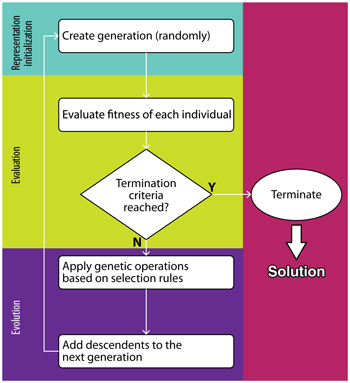Crossref Citations
This article has been cited by the following publications. This list is generated based on data provided by
Crossref.
Al-Helali, Baligh
Chen, Qi
Xue, Bing
and
Zhang, Mengjie
2019.
A Genetic Programming-based Wrapper Imputation Method for Symbolic Regression with Incomplete Data.
p.
2395.
Wang, Yiqun
Wagner, Nicholas
and
Rondinelli, James M.
2019.
Erratum to: Symbolic regression in materials science—CORRIGENDUM.
MRS Communications,
Vol. 9,
Issue. 4,
p.
1370.
Liang, Jiechun
and
Zhu, Xi
2019.
Phillips-Inspired Machine Learning for Band Gap and Exciton Binding Energy Prediction.
The Journal of Physical Chemistry Letters,
Vol. 10,
Issue. 18,
p.
5640.
Batra, Rohit
Song, Le
and
Ramprasad, Rampi
2020.
Emerging materials intelligence ecosystems propelled by machine learning.
Nature Reviews Materials,
Vol. 6,
Issue. 8,
p.
655.
Chakraborty, Arijit
Sivaram, Abhishek
Samavedham, Lakshminarayanan
and
Venkatasubramanian, Venkat
2020.
Mechanism discovery and model identification using genetic feature extraction and statistical testing.
Computers & Chemical Engineering,
Vol. 140,
Issue. ,
p.
106900.
Chen, Chi
Zuo, Yunxing
Ye, Weike
Li, Xiangguo
Deng, Zhi
and
Ong, Shyue Ping
2020.
A Critical Review of Machine Learning of Energy Materials.
Advanced Energy Materials,
Vol. 10,
Issue. 8,
Al-Roomi, Ali R.
and
El-Hawary, Mohamed E.
2020.
Universal Functions Originator.
Applied Soft Computing,
Vol. 94,
Issue. ,
p.
106417.
Weng, Baicheng
Song, Zhilong
Zhu, Rilong
Yan, Qingyu
Sun, Qingde
Grice, Corey G.
Yan, Yanfa
and
Yin, Wan-Jian
2020.
Simple descriptor derived from symbolic regression accelerating the discovery of new perovskite catalysts.
Nature Communications,
Vol. 11,
Issue. 1,
Song, Zhilong
Chen, Xiwen
Meng, Fanbin
Cheng, Guanjian
Wang, Chen
Sun, Zhongti
and
Yin, Wan-Jian
2020.
Machine learning in materials design: Algorithm and application*
.
Chinese Physics B,
Vol. 29,
Issue. 11,
p.
116103.
Sha, Wuxin
Guo, Yaqing
Yuan, Qing
Tang, Shun
Zhang, Xinfang
Lu, Songfeng
Guo, Xin
Cao, Yuan-Cheng
and
Cheng, Shijie
2020.
Artificial Intelligence to Power the Future of Materials Science and Engineering.
Advanced Intelligent Systems,
Vol. 2,
Issue. 4,
Lakshminarayanan, Madhavkrishnan
Dutta, Rajdeep
Repaka, D. V. Maheswar
Jayavelu, Senthilnath
Leong, Wei Lin
and
Hippalgaonkar, Kedar
2021.
Comparing data driven and physics inspired models for hopping transport in organic field effect transistors.
Scientific Reports,
Vol. 11,
Issue. 1,
Yin, Wan-Jian
2021.
Density functional theory-free descriptor for the practical discovery of perovskite catalysts.
Computational Materials Science,
Vol. 193,
Issue. ,
p.
110342.
Abdellaoui, Ismail Alaoui
and
Mehrkanoon, Siamak
2021.
Symbolic regression for scientific discovery: an application to wind speed forecasting.
p.
01.
2021.
Optimal Coordination of Power Protective Devices with Illustrative Examples.
p.
457.
Fowlie, Jennifer
Georgescu, Alexandru Bogdan
Mundet, Bernat
del Valle, Javier
and
Tückmantel, Philippe
2021.
Machines for Materials and Materials for Machines: Metal-Insulator Transitions and Artificial Intelligence.
Frontiers in Physics,
Vol. 9,
Issue. ,
Cartus, Johannes J.
Jeindl, Andreas
and
Hofmann, Oliver T.
2021.
Can We Predict Interface Dipoles Based on Molecular Properties?.
ACS Omega,
Vol. 6,
Issue. 47,
p.
32270.
Al-Helali, Baligh
Chen, Qi
Xue, Bing
and
Zhang, Mengjie
2021.
A new imputation method based on genetic programming and weighted KNN for symbolic regression with incomplete data.
Soft Computing,
Vol. 25,
Issue. 8,
p.
5993.
Foppa, Lucas
Ghiringhelli, Luca M.
Girgsdies, Frank
Hashagen, Maike
Kube, Pierre
Hävecker, Michael
Carey, Spencer J.
Tarasov, Andrey
Kraus, Peter
Rosowski, Frank
Schlögl, Robert
Trunschke, Annette
and
Scheffler, Matthias
2021.
Materials genes of heterogeneous catalysis from clean experiments and artificial intelligence.
MRS Bulletin,
Vol. 46,
Issue. 11,
p.
1016.
ARI, Davut
and
ALAGÖZ, Barış Baykant
2021.
A Review of Genetic Programming: Popular Techniques, Fundamental Aspects, Software Tools and Applications.
Sakarya University Journal of Science,
Vol. 25,
Issue. 2,
p.
397.
Garbrecht, Karl
Aguilo, Miguel
Sanderson, Allen
Rollett, Anthony
Kirby, Robert M.
and
Hochhalter, Jacob
2021.
Interpretable Machine Learning for Texture-Dependent Constitutive Models with Automatic Code Generation for Topological Optimization.
Integrating Materials and Manufacturing Innovation,
Vol. 10,
Issue. 3,
p.
373.
